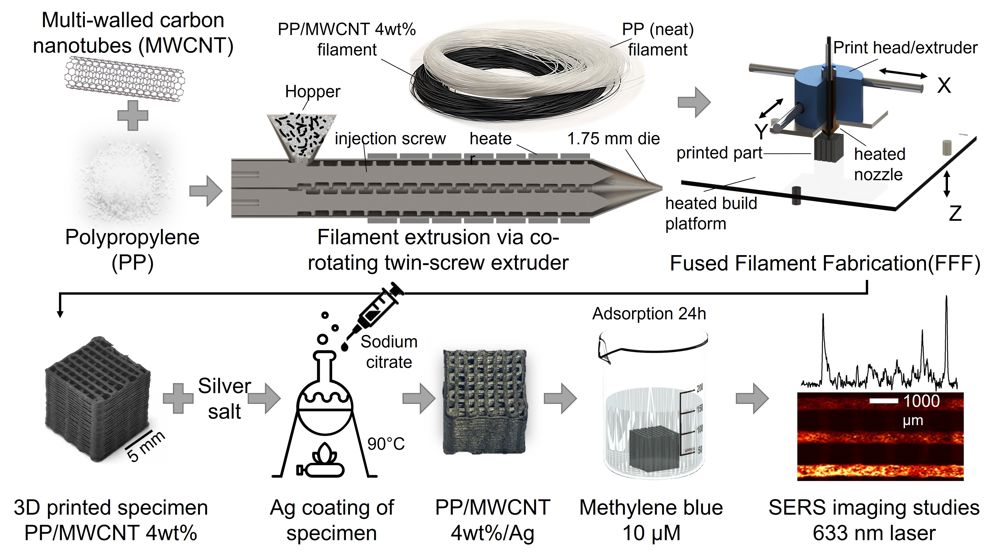Described in the journal Macromolecular Materials and Engineering, the device uses a chemical analysis tool called surface-enhanced Raman scattering, or SERS, which analyses the interaction of light with molecules to detect the composition of sample materials. When light hits molecules, it scatters in a way that has distinctly different frequencies depending on molecular structure.
The research team developed a new more portable method of testing that could use affordable, 3D-printed materials to adsorb molecules from water samples and deliver accurate initial results in the field. They tested the ability of several different architected designs of the 3D-printed cellular materials to uptake and adsorb molecules of an organic dye called methylene blue before analysing them via a portable Raman spectrometer. Test strips containing silver nanoparticles were found to be capable of detecting molecules of pesticides at concentrations as low as one micromolar – equivalent to one molecule of pesticide to a million molecules of water.

“SERS is a valuable diagnostic technique with applications in a wide range of different fields,” said corresponding author Professor Shanmugam Kumar, from Glasgow University’s James Watt School of Engineering. “The sensor substrate material we’ve developed benefits from an optimal combination of the nanocarbon-engineered architected lattice’s large surface area and the remarkable optical properties of the metallic nanoparticles.
“The interaction of the strong local electromagnetic field in the metallic nanoparticles and the carbonaceous material’s chemical mechanisms creates a highly active surface for SERS analysis. The results of this initial study are very encouraging, showing that these low-cost materials can be used to produce sensors for SERS detection of pesticides even at very low concentrations.”
According to co-author Dr Sara Fateixa, from the University of Aveiro’s CICECO Aveiro Institute of Materials in Portugal, the device could have potential applications beyond water monitoring.
“While this paper examines the potential of the system to detect specific types of water pollutants, the technique could easily be adapted to monitor the presence of a wide range of chemicals in samples,” said Dr Fateixa, who designed the plasmonic nanoparticles that enable the SERS technique.
“In farming, for example, the milk from cattle, who are recovering from an illness, which was treated with antibiotics can’t be sold until after the drug has left their systems. Currently, the tests which prove their milk is ready to go back on the market are expensive, but our diagnostic materials could be tuned to provide reliable results much more affordably. We’re looking forward to continuing to develop this very promising sensor material for use in SERS applications.”











Breaking the 15MW Barrier with Next-Gen Wind Turbines
Hi Martin, a wind turbine blade functions very much like an airplane wing in a climb. Obviously in one case the air is moving and the other the air is...